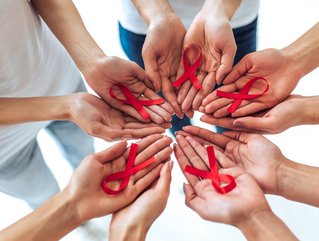HIV, Polio & the Great Plague: Top 10 past healthcare crises

The COVID-19 pandemic has reportedly killed up to six million people across the world.
This is in addition to those who have died indirectly from the pandemic, for example, from suicide or after being unable to access healthcare in busy hopsitals. There are also concerns that some healthcare facilities have not accurately reported death totals from COVID-19.
But we’ve had worse - or weirder - healthcare crises. From mental health illnesses impossible to ignore to devistating sexually transmitted infections, bizare mass hysteria to plagues - our planet has seen its share of emergency healthcare crises.
To put things in perspective, here are our Top 10.
10. Laughing epidemic
Tanganyika, Tanzania, 1962
Mass hysteria is when a type of behaviour is observed in a group. One instance took place at a boarding school in Tanzania, 1962, when teenage girls could not stop laughing and crying for two years.
“Mass hysteria usually occurs in a group of people who don't have a lot of power. It's an easy way for them to express that something is wrong,” explained Associate Professor Christian F. Hempelmann.
9. Biting nuns
Germany, Italy and Holland, 1400s
In another instance of mass hysteria, one 15th century nun in Germany began biting her sisters. The behaviour then spread through the convent.
A doctor reported: “The news of this infatuation among the nuns soon spread and passed convent to convent throughout Germany, the nunneries of Holland and at last, the nuns had biting mania even as far as Rome.”
When threatened with flogging, the behaviour halted.
8. SARS virus
Worldwide, but mostly East Asia, 2003
Severe Acute Respiratory Syndrome spread from bats, to cats and then to humans across China. With symptoms including a dry cough, fever and body aches, many mistook COVID-19 for SARS.
The virus caused a reported 774 deaths and China was criticised for downplaying the seriousness of SARS.
7. H1N1, Swine flu pandemic
Global, 2009
Another respiratory disease, Swine Influenza is familiar to pigs and can be fatal. It can also infect humans.
An outbreak at a pig farm in Mexico led to a global pandemic, which also infected young people, who have been traditionally safer from such outbreaks due to their youth. A child who lived close to the farm was the first patient to be identified.
6. PTSD ‘Shell shock’
Recognised globally post World War One
Records of war-weary soldiers go back as far as ancient Greece. Those suffering with nightmares and flashbacks, guilt and anxiety, were told it was ‘best to forget’ the traumatic events they had witnessed - or that they were cowards.
After the First World War, this was impossible to do and post-traumatic stress disorder (PTSD) or ‘Shell Shock’ was taken seriously.
5. Polio
Global
As a viral disease, Polio impacts the nervous system, resulting in paralysis. It can spread through direct contact, from those with the infection. Outbreaks were recorded in the USA in 1916 and later in 1952.
Shortly after in 1955, Dr. Jonas Salk created a vaccine which was then approved across the world.
4. The Great Plague
Global, 1346-1353
Even at the height of COVID-19, the Great Plague, also known as ‘The Black Death’, makes all others shrink in comparison. The plague started somewhere in Asia and moved internationally with fleas on the back of rats which hid on trade ships.
One-third of the global population died as a result.
3. Native American population devastated by smallpox transmitted by Europeans
1630s
Smallpox is contagious, spreading easily from one person to another, or from material to a person. When European settlers arrived in the Americas, they had some knowledge about smallpox and how to treat it - the Native Americans did not. Up to 95% of the indigenous population was annihilated by smallpox carried by European settlers.
2. AIDS crisis
Global, 1980s
Acquired immunodeficiency syndrome, AIDS, destroys a patient’s immune system, which prevents the body from defending itself from diseases that the body knows how to fight.
HIV leads to AIDS when the immune system has been badly damaged. Although AIDS cannot be transmitted between people, the HIV virus can be passed on through contact of broken skin or bodily fluids.
35 million people across the world have died from AIDS since it was first identified and there is no cure.
1. Influenza epidemic or ‘Spanish Flu’
Global, 1918
The avian-borne flu caused 50 million deaths across the world and scientists are still uncertain as to where it originated - but it was not Spain.
In the First World War, news was censored, but in neutral Spain, journalists were able to report freely about the strange sickness. Once the censorship was lifted, Spain knew more about the Influenza epidemic, which led to others calling it ‘The Spanish Flu’.
By the summer of 1919, survivors had developed immunities and the flu had disappeared.
Due to the social-political fallout of the First World War, the Influenza epidemic is often forgotten, but the epidemic eclipsed the total war casualties.






